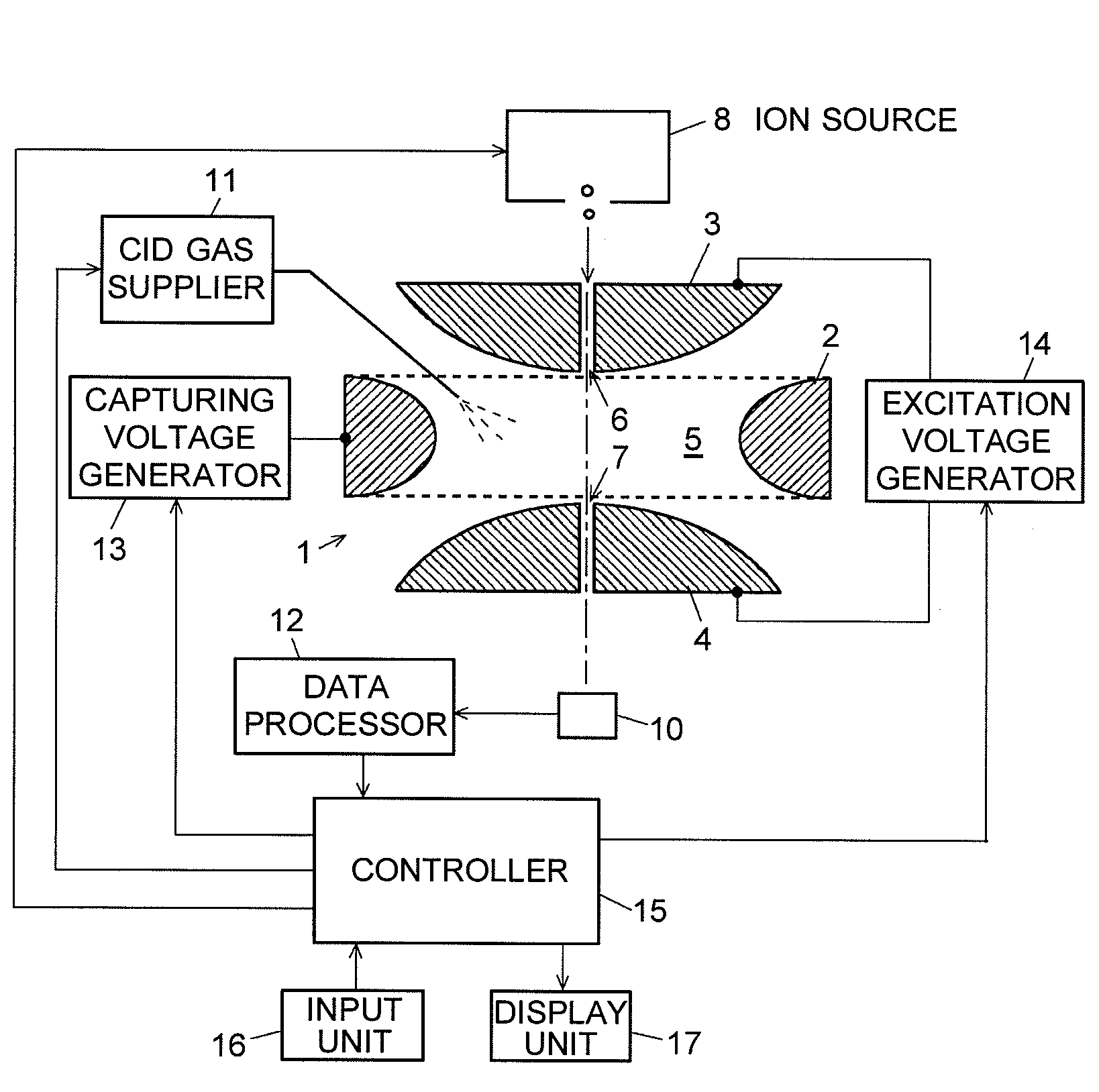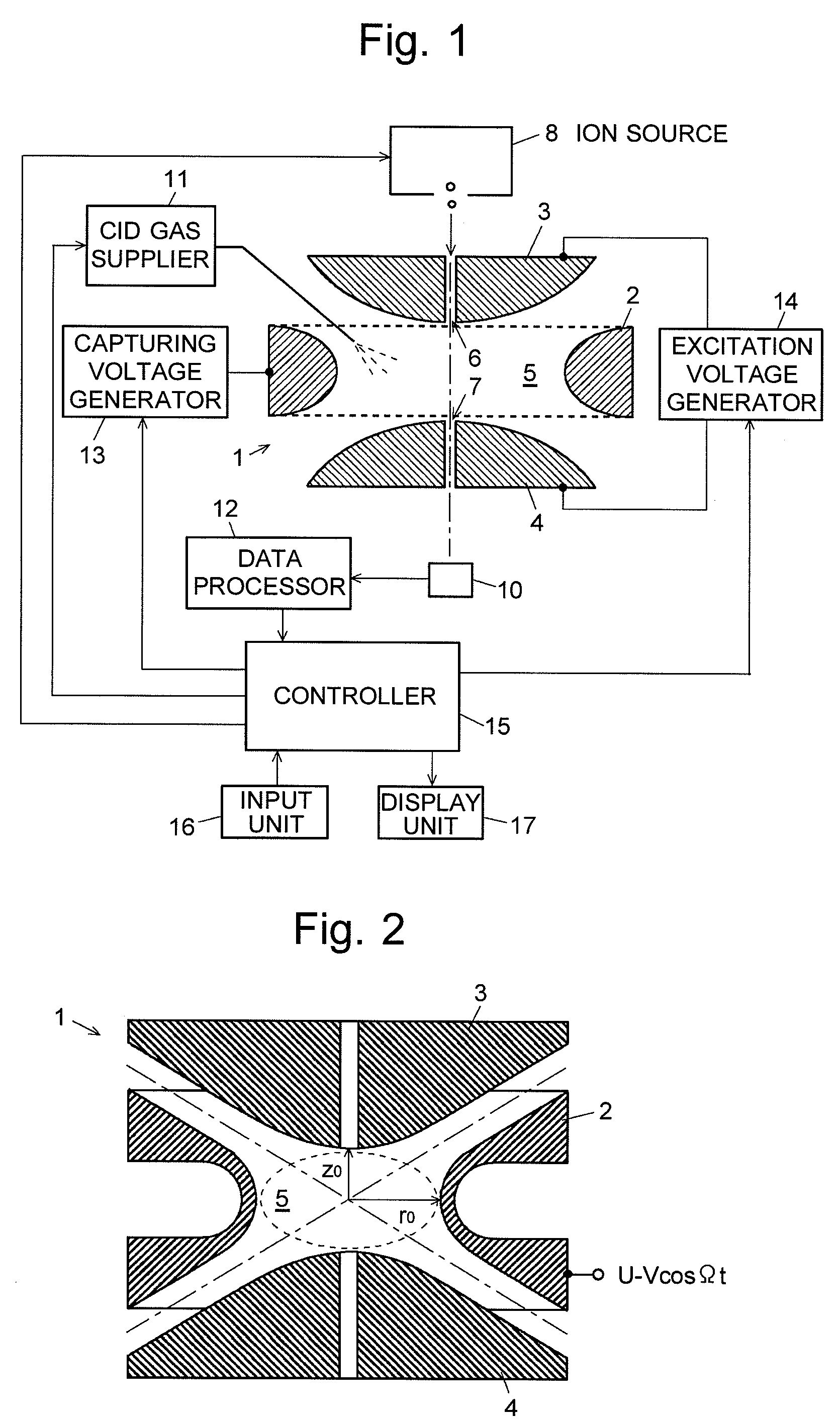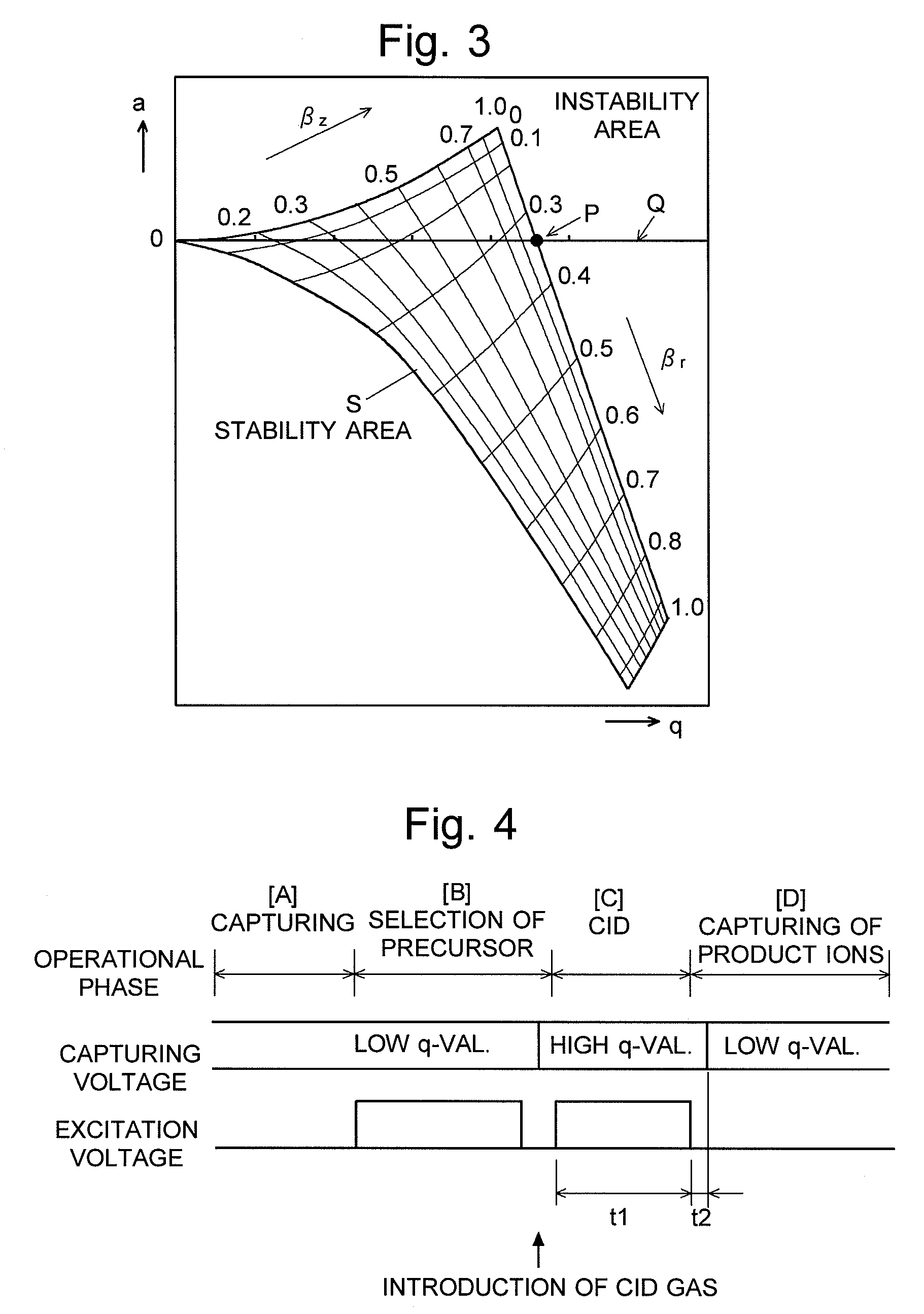Mass-analysis method and mass-analysis apparatus
a mass analysis and mass analysis technology, applied in the field of mass analysis methods and mass analysis apparatus, can solve the problems of not being able to meet the requirements of reducing the lower limit of the mass range, unable to simultaneously satisfy the requirements of improving the dissociation efficiency and reducing the dissociation efficiency, and preventing the dissipation of product ions. , the effect of small mass-to-charge ratio
- Summary
- Abstract
- Description
- Claims
- Application Information
AI Technical Summary
Benefits of technology
Problems solved by technology
Method used
Image
Examples
Embodiment Construction
[0049]This section details the structure and operation of an ion trap mass spectrometer (IT-MS) as an embodiment of the second aspect of the present invention for carrying out the mass-analysis method according to the first aspect of the present invention. FIG. 1 is a general configuration diagram of the IT-MS of the present embodiment. The components of the ion trap are denoted by the same numerals as already used in FIG. 2.
[0050]As explained previously, the ion trap 1 includes a ring electrode 2 and end-cap electrodes 3 and 4. The ring electrode 2 is connected with a capturing voltage generator 13, while the end-cap electrodes 3 and 4 are connected with an excitation voltage generator 14. An ion source 8 is located outside the injection port 6 formed approximately at the center of the inlet end-cap electrode 3. Molecular ions generated by the ion source 8 will be introduced through the injection port 6 into the ion-trapping space 5. The exit end-cap electrode 4 has an ejection por...
PUM
 Login to View More
Login to View More Abstract
Description
Claims
Application Information
 Login to View More
Login to View More - R&D
- Intellectual Property
- Life Sciences
- Materials
- Tech Scout
- Unparalleled Data Quality
- Higher Quality Content
- 60% Fewer Hallucinations
Browse by: Latest US Patents, China's latest patents, Technical Efficacy Thesaurus, Application Domain, Technology Topic, Popular Technical Reports.
© 2025 PatSnap. All rights reserved.Legal|Privacy policy|Modern Slavery Act Transparency Statement|Sitemap|About US| Contact US: help@patsnap.com



